David Notter

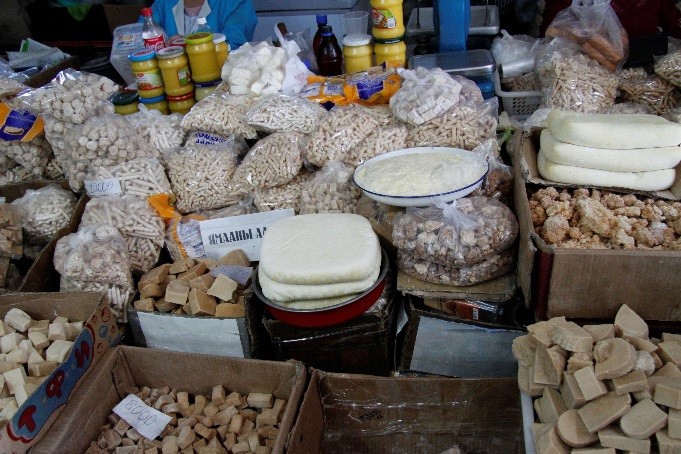

Processing and Marketing of Animal Fiber is a particular opportunity for Mongolian herders. Mongolian cashmere is recognized as some of the best in the world, and numbers of cashmere goats have increased rapidly in the last 3 decades, to provide a source of income for herder families. Many organizations (both international and within Mongolia) have programs on marketing and local processing of cashmere, but more herders (as well as local and national processors) need to be involved in these programs.
An interesting development has been a parallel, though more recent, interest in yak wool. The undercoat of the yaks is a very fine fiber similar to cashmere and has developed as a specialty fiber for processing and sale on the international market. Purebred yaks are most commonly black in color but other colors do occur. Crossing between yak and cattle is common (in Mongolia, the first cross is known as a "khainag") and allows the introduction of a wider range of colors into the resulting crosses. Because white fibers can be dyed to produce fabrics of different colors, white animals are favored over colored ones, and there is a demand for white yak bulls.
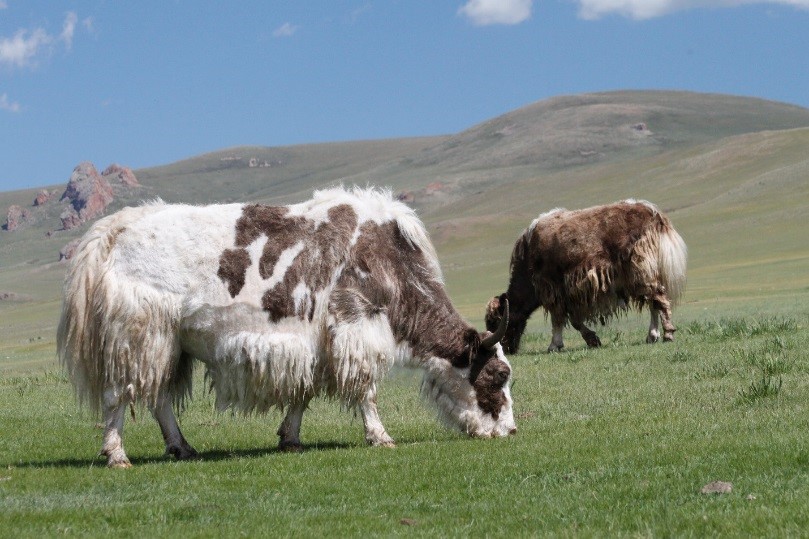
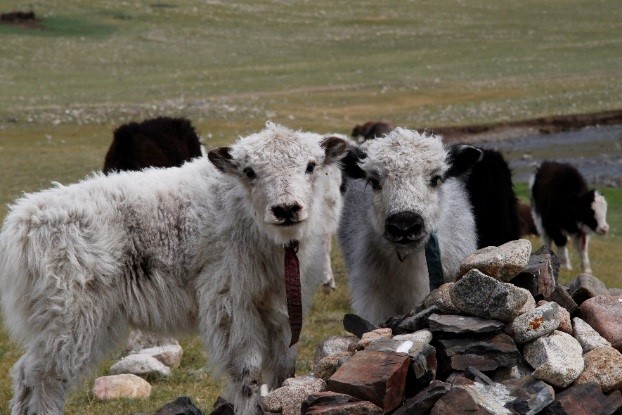
Opportunities and challenges for sustainable livestock development in Mongolia
Posted by David Notter, Farmer-to-Farmer (F2F) volunteer, professor emeritus in the Department of Animal and Poultry Sciences, Virginia Tech
The DSI - USAID Farmer-to-Farmer Program began with a fact-finding and program-development visit to Uvurkhangai aimag and was supported by Virginia Cooperative Extension at Virginia Tech and the Uvurkhangai Department of Food and Agriculture. The objectives of the assignment were to identify high-priority areas for future volunteers. Recommendations are discussed below.
Sustainable Commercial Dairying was an area of particular emphasis, given the central role of dairy products in the Mongolian diet and society. Multi-species dairying involving cattle (European, yak, and their crosses), mares, sheep, and goats is widespread and an important source of income for herder families.
Many herders now have simple milking sheds for winter milking. Animals are packed together in a small space in the shed for milking, to capture body heat and make milking more comfortable in often bitterly cold conditions. These sorts of simple milking sheds are typical across the country.


There is a particular need to identify reliable, low-cost mechanized milking equipment. The demands placed on the women who normally do the milking to increase production, milk more animals, and extend the milking season almost inevitably leads to eventual joint damage. Now that solar panels and associated small appliances have become commonplace among herder families, the use of small, multispecies milking machines seems to be a logical next step. However, training on the use, maintenance, and cleaning of the machines will be essential to maintain sanitation of collected milk and avoid transmission of disease among animals within the herd.
Milking of mares is widespread, and mildly fermented mares' milk ("airag") is a unique Mongolia product, with a central role in the hospitality of Mongolian herders.
Interest in extending the milking season of cattle throughout the winter to take advantage of previously underserved markets is growing but requires better animal housing, more use of hay and other supplemental feeds, and the identification of dairy animals that can produce more milk (to justify the greater investment in feed, labor, and housing) while still being suitably adapted to the often severe conditions during the Mongolia winter. Areas of future emphasis will therefore include options for economical housing, small-scale hay-making, development of more reliable water sources, and strategies for processing of dairy products to even-out supplies and cope with high production but lower demand (for example, from schools) during the summer grazing season.
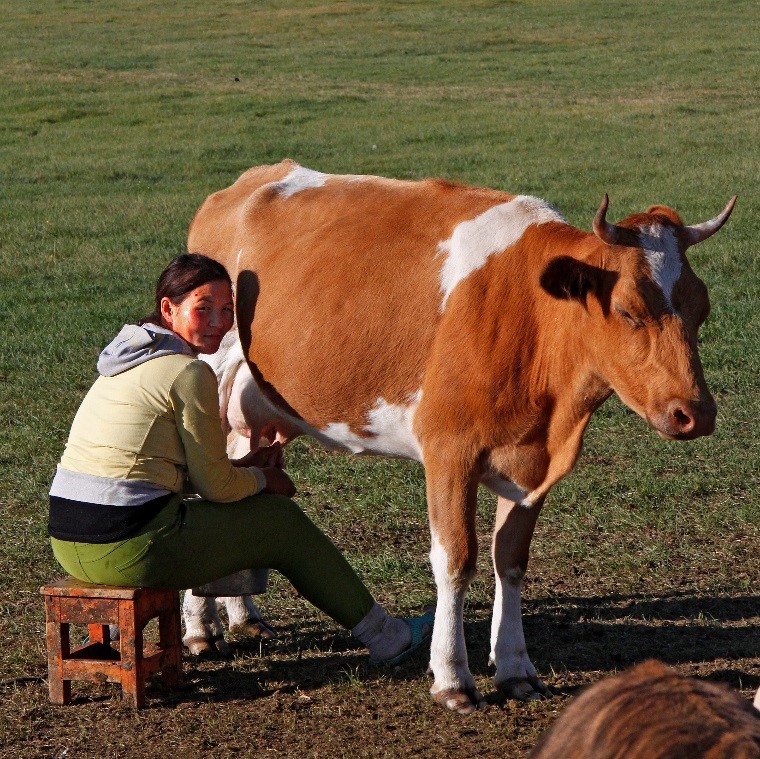
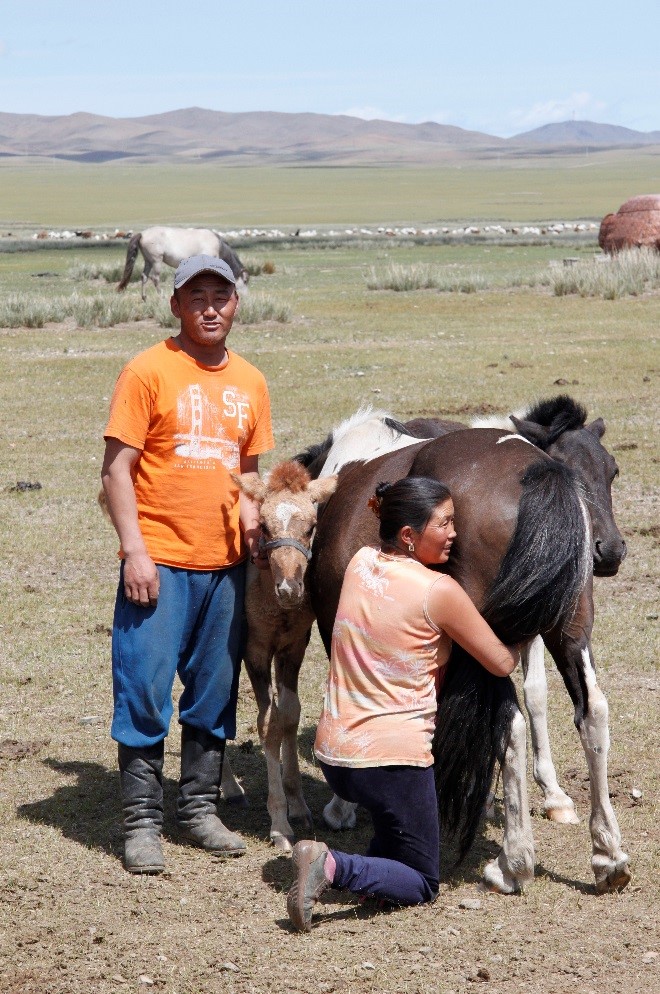
Processing and Marketing of Meat and Dairy Products is another area of emphasis. Increasing urbanization requires an expanded capacity to deliver meat and milk products from the grazing lands to the cities and towns. Traditional markets are appropriate to serve local communities but better sanitation and packaging could support delivery of products to more distant (and potentially more lucrative) markets, reduce seasonality of product availability, and improve product uniformity.
The importance of sanitation and proper handling of meat and dairy products chain is well-understood by producers, processers, and consumers. However, surveys conducted in 2011 and2014 indicated that the incidence of Brucellosis in Mongolia is relatively high in both dairy animals and herder families. Outbreaks of Foot and Mouth Disease are becoming less frequent, but remain persistent, and place significant constraints on the development of international markets for meat products. Better control of these two diseases is a priority for Mongolian livestock producers.
 v
v

